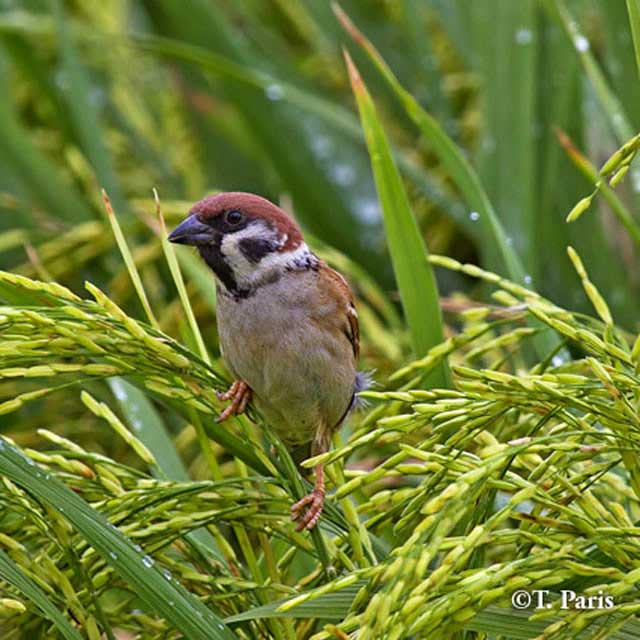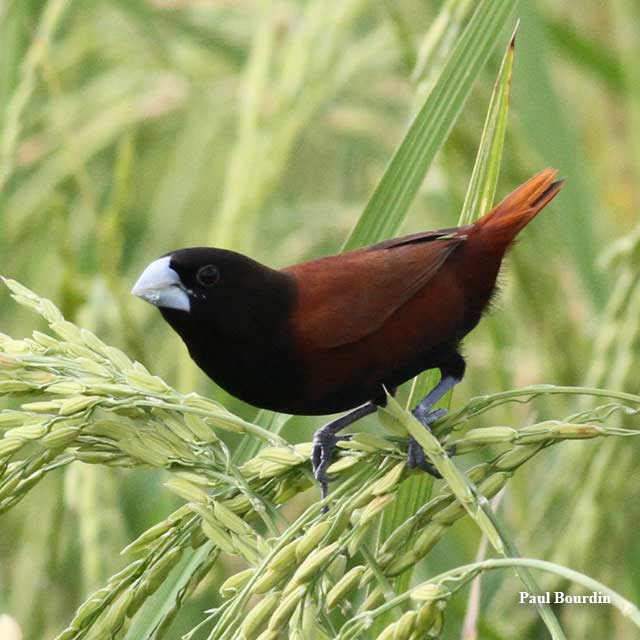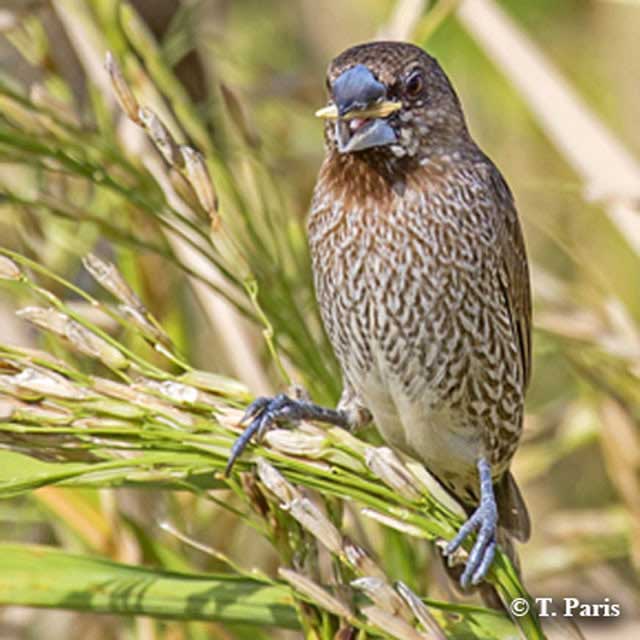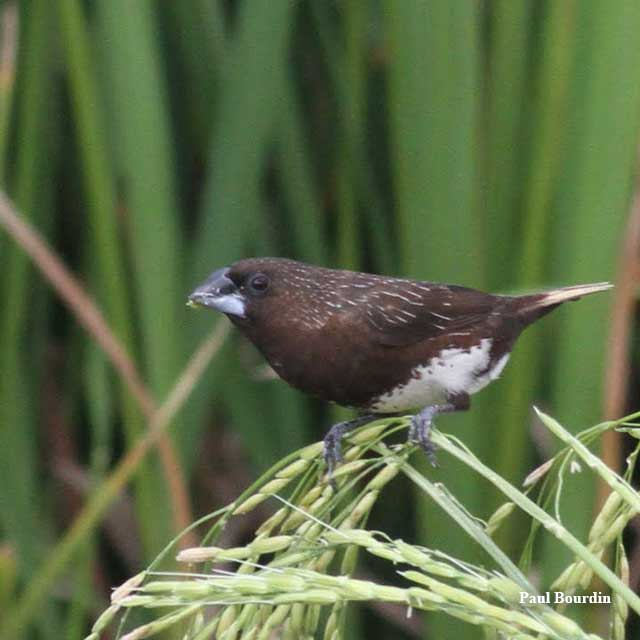Birds
Out of more than 70 species of bird found in rice fields, only five species in the Philippines (and about 14 in Southeast Asia) are known to feed on rice.
Some rice-eating birds include:
 |
 |
 |
 |
| Eurasian Tree Sparrow (Passer montanus) |
Chestnut Munia (Lonchura malacca) |
Scaly-Breasted Munia (Lonchura punctulata) |
White-Bellied Munia (Lonchura leucogastra) |
Photos by Tirso Paris and Paul Bourdin
What it does
Rice-eating birds chew rice grains, and can cause whitehead or unfilled panicles.
They either squeeze the grains during the milky phase, or eat the entire grain once mature. The damage shows a milky white substance covering the grains.
Why and where it occurs
Birds become a problem from ripening phase—when the rice plant is already developing and filling in grains—until harvest.
Some species will feed off of the panicles by either landing upon them, by perching on nearby objects (such as fences or posts) or by eating the dropped grain on the ground when fields are harvested. Bird pest species are most abundant during this time.
How to identify
Check for presence of milky substance on chewed grains, and for whiteheads with removed grains.
Whiteheads can also be caused by stem borer. To confirm the cause of damage:
- in bird damage, not all grains are chaffy
- in stem borer damage, all grains in a panicle are chaffy and the panicle can be pulled out easily
Why is it important
Birds chew seeds in the milky stage of the crop. The damage caused due to perching birds on the panicles results in some crop loss.
How to manage
It is important to consider the type of management to apply to your field. There are benefits and consequences of most devices. A number of options are available. These can be done all year or just seasonally:
- "Bird Boys"
These are farm workers who shoo away birds. These can be effective if their techniques for catching or scaring birds are always changing, and if they know the specific granivorous bird species to target.
- Exclusion netting
Using nets over rice fields can be effective, however, it could be expensive. It also tends to exclude all bird species, even the beneficial ones. When birds get trapped within the net, it could also cause fatality.
- Bird-tape
Tapes are placed over the rice plants. This could be one of the best options for scaring birds.
- Noisemakers
Noisemakers can be used to produce random sounds and recordings that can scare the birds. However, both sounds can easily be remembered by birds, thus, it may be effective only for a short-term. Random sounds can scare all birds, while recordings are species-specific. There are also ultrasonic noise makers, but some birds cannot hear it.
- Chemical repellents
These are usually chili extracts. Many are commercially available and require approximately one liter is used for one hectare. Repellents should be continuously applied, every two weeks. They also need to be re-applied after rain.
- Decoy birds
Using decoy birds are, relatively, an easy method of management; it can also be relatively cheap. Depending on the type of decoy bird, they can be used to attract or repel the birds in your farm.
- Use of flags, scare crows, or bird kites
These methods work similar to tape, and are also relatively cheap. Flags, scare crows, and bird kites move due to wind, thus acting as a deterrent to birds. However, birds become habituated to these devices quickly, therefore, only providing protection for a short period of time.
- Eco-engineering
Eco-engineering in bird pest control means leaving the bigger birds to hunt naturally and without persecution. This should naturally manage and balance the system in the rice fields.
This is the cheapest option available, but can have different results.
Using large birds to scare away smaller birds is using the natural food web to a farmer’s advantage. Although dependent on a lot of variables, if the natural biodiversity is present, pest species could be managed.
Eco-engineering is fully ‘natural’ and requires more education of people in the field than anything else. Reduced bird hunting or trapping for the pet trade could restore natural balance to a rice field.